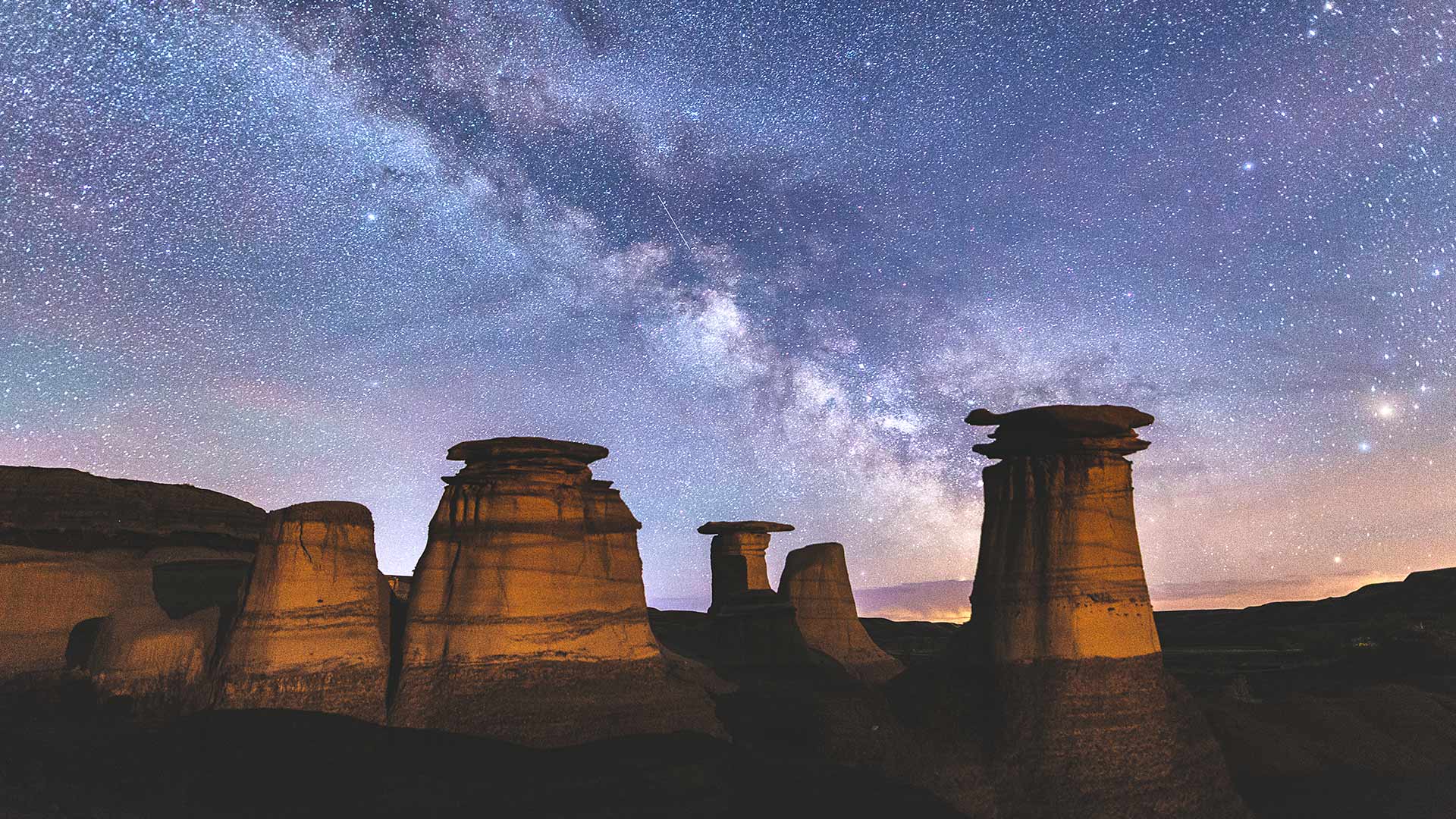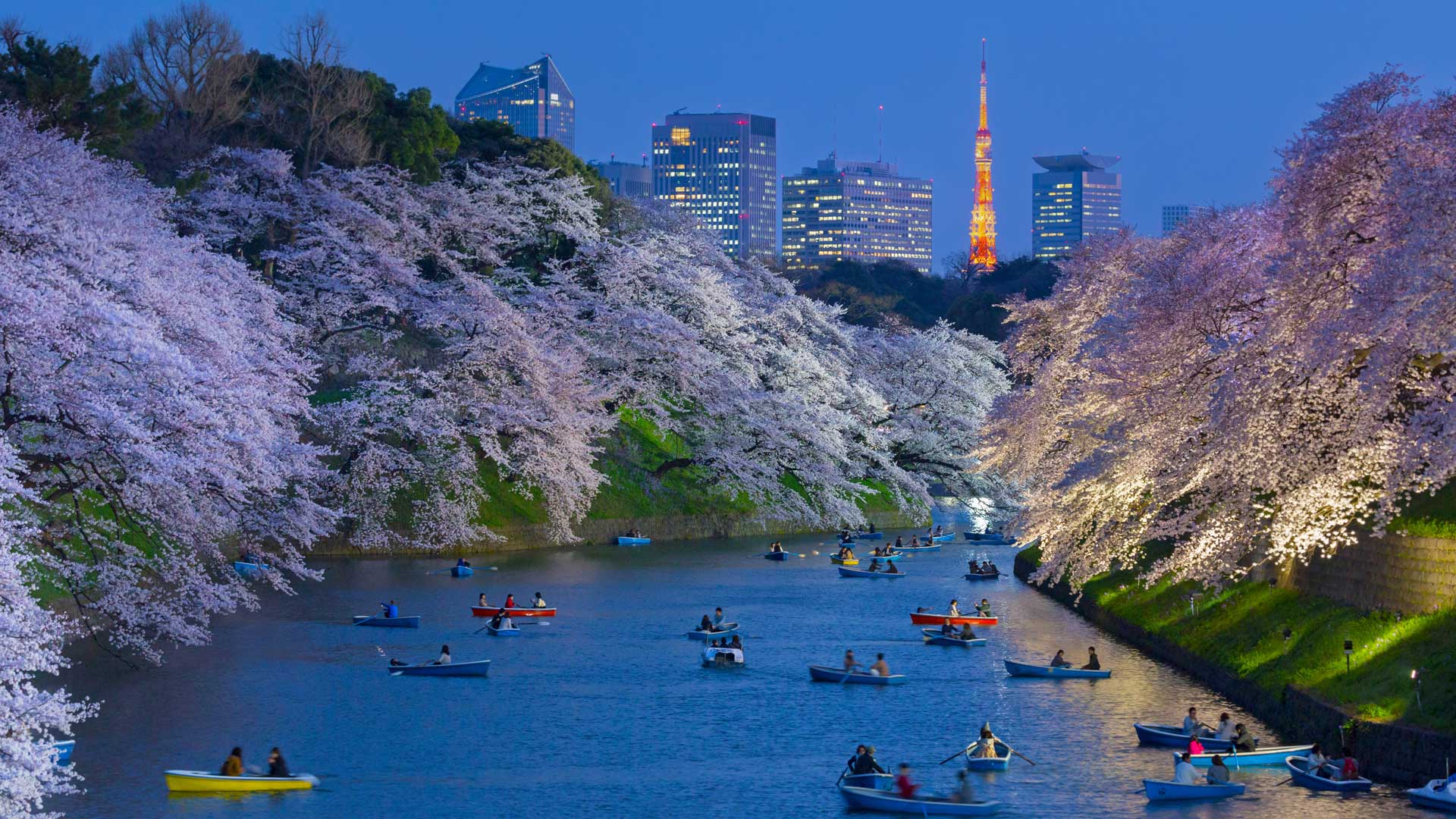Brightly-coloured powder for sale during Holi (© Max Bauerfeind/Shutterstock)

Brightly-coloured powder for sale during Holi (© Max Bauerfeind/Shutterstock)
Playing Holi, anyone?
Hindus in India and around the globe are celebrating Holi today, a spring celebration also called the festival of love, or the festival of colors. Why colors? Because these colorful powders are flung in joyous revelry to welcome spring and celebrate the blossoming of love. It is a time to forget old grievances and hope for a bountiful spring harvest season.
加拿大恶地里石窟上方的银河,加拿大亚伯达省德拉姆黑勒 (© Felis Images/Minden Pictures)
曼哈顿河滨公园中的圣女贞德纪念碑 The Joan of Arc Monument at Riverside Park in Manhattan (© Chase Guttman/Alamy)

曼哈顿河滨公园中的圣女贞德纪念碑 The Joan of Arc Monument at Riverside Park in Manhattan (© Chase Guttman/Alamy)
Joan charges Riverside Park
Joan of Arc leads the charge through New York's Riverside Park for our celebration of International Women's Day. The 2020 Women's Day observance is particularly meaningful in the United States because this marks 100 years since American women won the right to vote nationwide. That victory was the result of a long, difficult struggle by suffragists—women who faced ridicule, slander, imprisonment, and outright brutality for their efforts to claim their right to vote.
Bird's-eye view of Bronte Baths ocean pool outside Sydney, Australia (© Shay Cooper/Media Drum World/Cavan Images)

Bird's-eye view of Bronte Baths ocean pool outside Sydney, Australia (© Shay Cooper/Media Drum World/Cavan Images)
Peak summer in the Southern Hemisphere
As the Northern Hemisphere slowly creeps toward spring, our neighbors to the south are enjoying the sunny days of summer. Some are even cooling off with a trip to the pool, like the swimmers in today's image of the Bronte Baths, an ocean pool located in a Sydney suburb. While seaside swimming pools aren't unique to Australia, this island country is known for its many oceanside pools, which provide sheltered spots for swimming in places where rocky shorelines and occasional shark attacks can make ocean swimming difficult or dangerous.
以东京塔为背景皇宫附近盛开的樱花,日本东京 (© Jon Arnold/Danita Delimont)
Dos Ojos自然公园里El Pit Cenote的潜水员,墨西哥金塔纳罗奥 Divers at El Pit Cenote, located in Dos Ojos Natural Park, Quintana Roo, Mexico (© Christia Vizl/Tandem Stills + Motion)
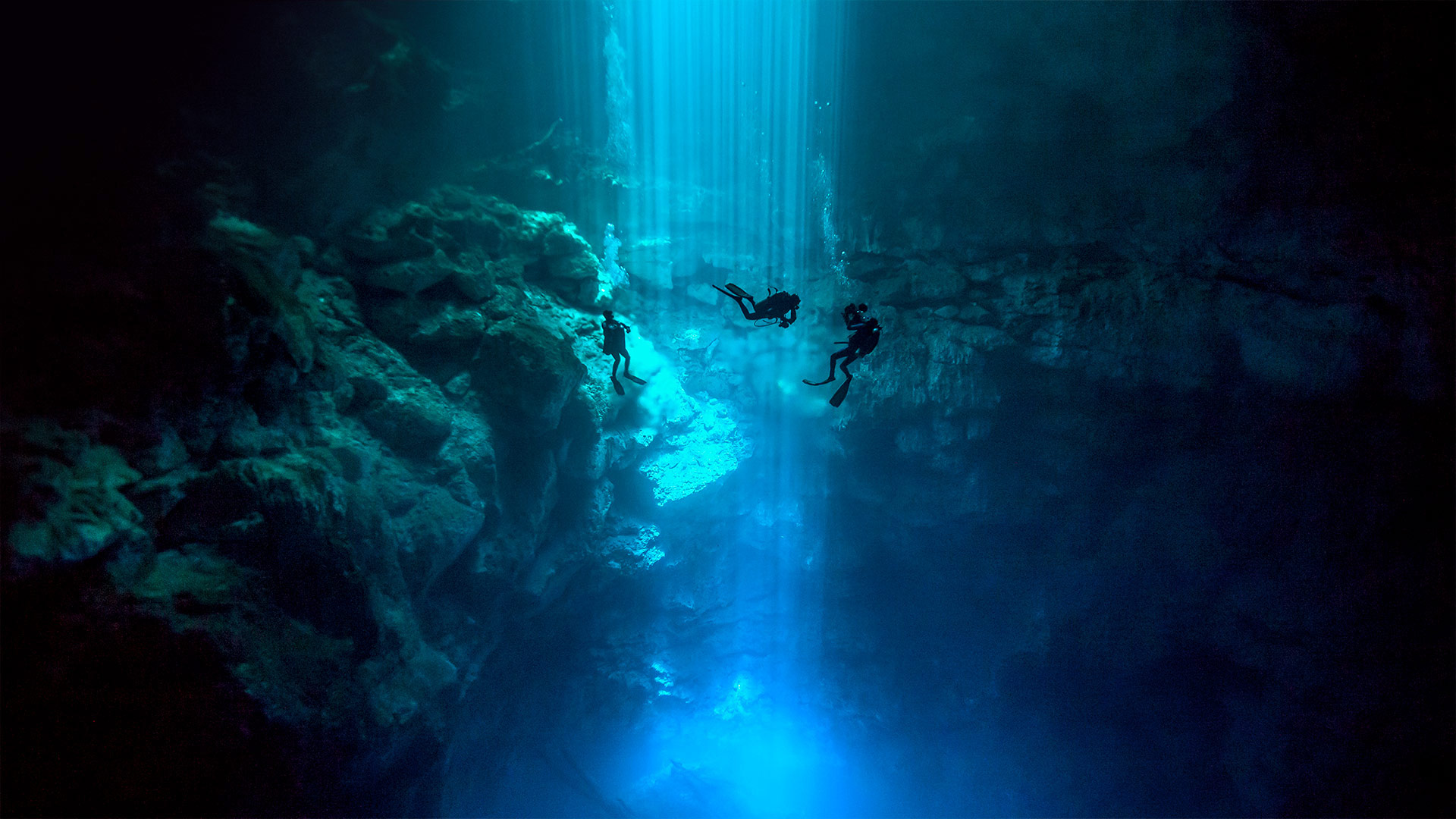
Dos Ojos自然公园里El Pit Cenote的潜水员,墨西哥金塔纳罗奥 Divers at El Pit Cenote, located in Dos Ojos Natural Park, Quintana Roo, Mexico (© Christia Vizl/Tandem Stills + Motion)
The desert blooms
It's getting to be wildflower season in the Sonoran Desert of Arizona. That means it won't be long before we see blooms from the big daddy of the cactus world–the saguaro. Our homepage pic shows just a glimpse of this amazing succulent. The saguaro is the largest cactus in the United States, capable of growing upwards of 50 feet tall and weighing several tons (that's when it's fully hydrated). It can live more than 100 years and will grow arms as it ages, creating that classic cactus profile that's associated with the desert and Old West. As for its flowers, they're short-lived, typically blooming at dusk and remaining open till midmorning the next day. The flowers form only at the top of the plant and the tips of branches. The blooms are striking enough to be honored as Arizona's state flower. Later they'll produce a red, edible fruit that will ripen by July.
“精灵烟囟”和窑洞,土耳其卡帕多西亚 Fairy chimneys and cave dwellings in Uçhisar, Cappadocia, Turkey (© Ivan Kmit/Alamy)
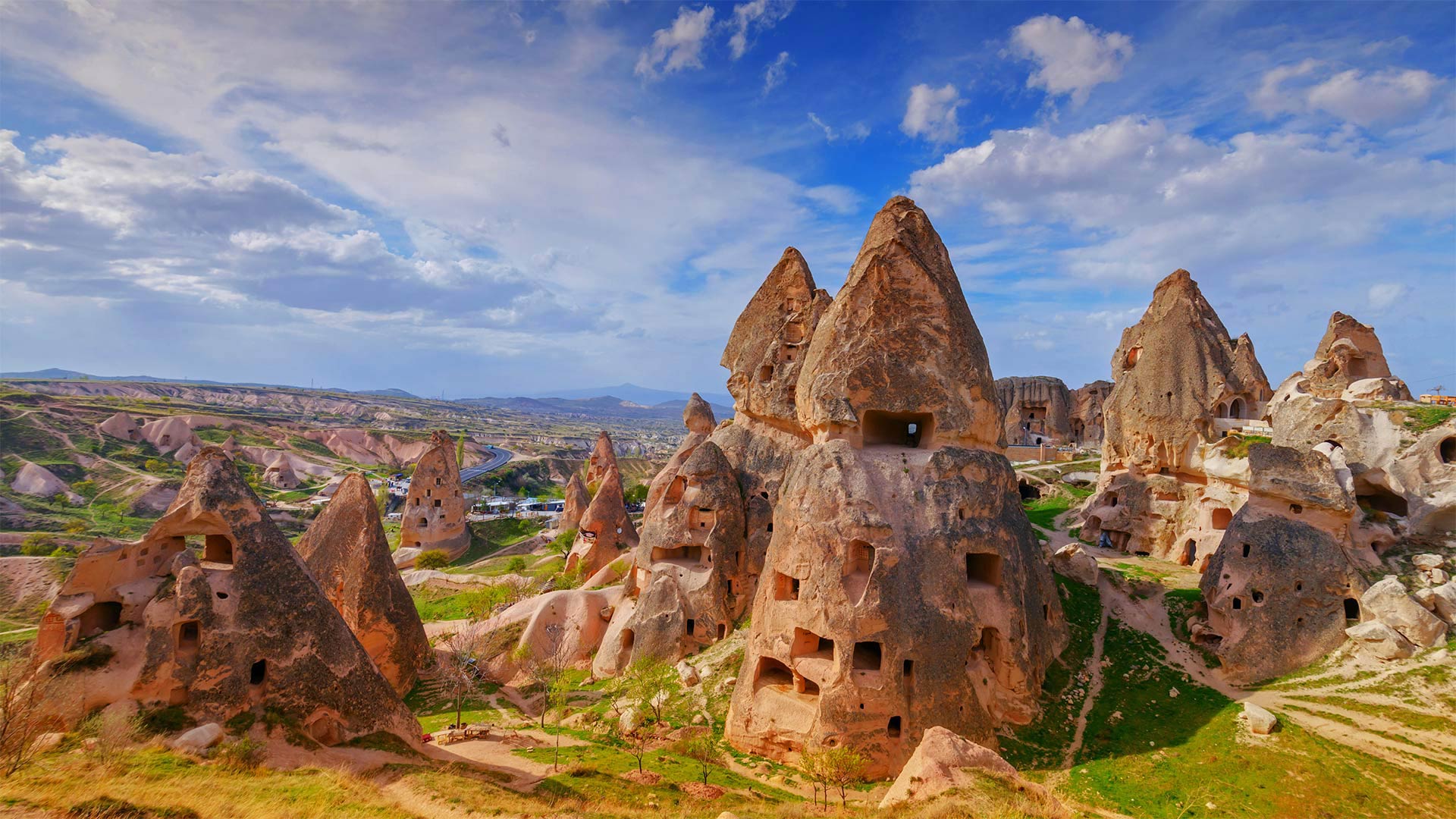
“精灵烟囟”和窑洞,土耳其卡帕多西亚 Fairy chimneys and cave dwellings in Uçhisar, Cappadocia, Turkey (© Ivan Kmit/Alamy)
And to think that I saw it in Cappadocia
The fantastical 'fairy chimneys' found in central Turkey's historic Cappadocia region were formed by a collision of the natural and the man-made—and they form a scene that seems straight out of a Dr. Seuss illustration. The landforms were created when volcanoes deposited mounds of soft, porous rock called tuff, which was later covered with hard basalt. In the 10th century (though possibly starting up to 5,000 years ago) humans excavated the tuff to create caves and catacombs that could fit thousands of dwellers. Through not only the astonishing ruins but the many 'cave hotels' hewn into rock in the city of Göreme, the memory of those ingenious city planners lives on.
But in fact, it's the memory of Dr. Seuss that brings us here today. On March 2, 1904, Seuss—real name Theodor Geisel—was born in Springfield, Massachusetts. The children's book creator—known for his quirky, bombastic poetry and fantastical pen-and-ink landscapes—passed away in 1991, but his birthday is still observed as a yearly celebration of literacy for kids and 'obsolete children' (as Seuss classified adults) everywhere.
大西洋和特内里费山脉上空的流云,西班牙加那利群岛 Flowing clouds over the Atlantic Ocean and Tenerife mountains, Canary Islands, Spain (© MikeMareen/iStock/Getty Images Plus)
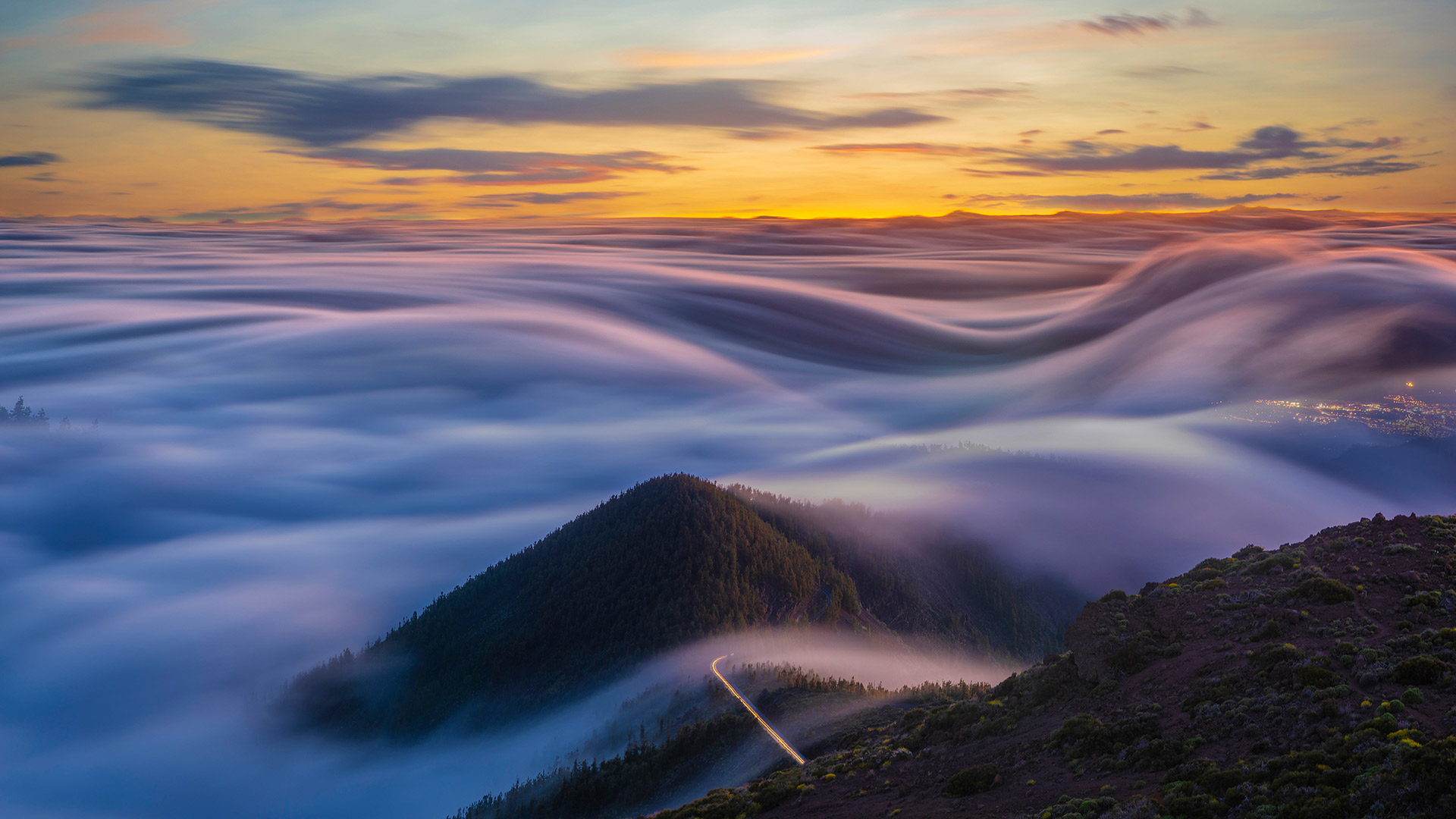
大西洋和特内里费山脉上空的流云,西班牙加那利群岛 Flowing clouds over the Atlantic Ocean and Tenerife mountains, Canary Islands, Spain (© MikeMareen/iStock/Getty Images Plus)
Sea of clouds
What you can see in our photo is a sea of clouds over the island of Tenerife, in Spain, a very common atmospheric phenomenon in the Canary archipelago. It is formed when the Trade winds arriving full of humidity from the ocean cannot rise due to a temperature inversion experimented above, so they form stracocumulus between 500 and 1,500 meters high.
Stratocumulus are large round shaped clouds formed in low altitude that cannot develop vertically because the dry and stable atmosphere above prevents them from rising. In addition to this, in north Tenerife they usually get stucked in the skirts of the mountains. That is why this place is one of the best to watch these flowing clouds. Its colour is usually dark, but at certain moments, such as at dawn showed in our image, the clouds acquire a bluish hue similar to the sea.
冬天的水獭溪,佛蒙特州布兰登 Otter Creek in winter in Brandon, Vermont (© Caleb Kenna/Offset)
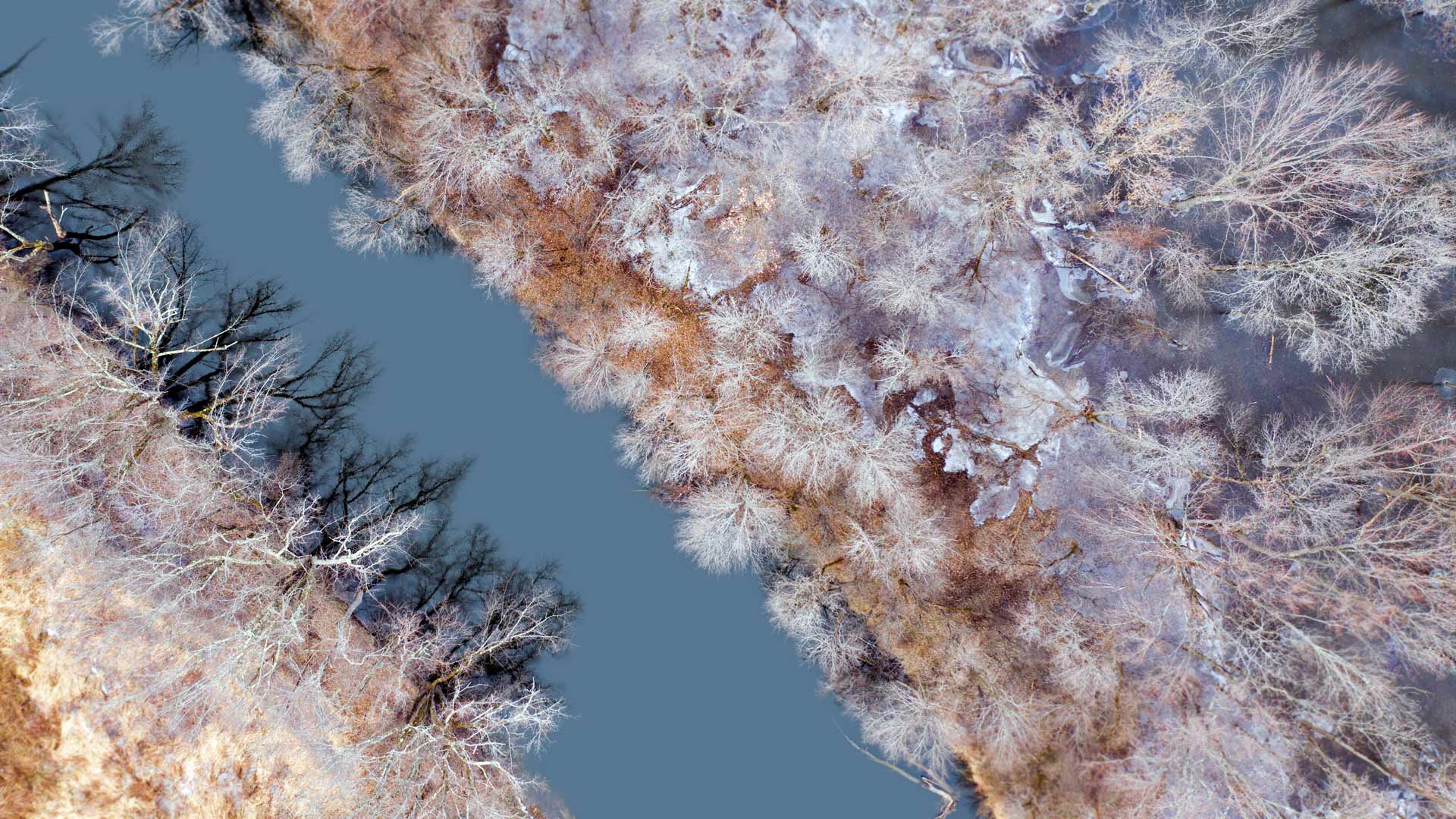
冬天的水獭溪,佛蒙特州布兰登 Otter Creek in winter in Brandon, Vermont (© Caleb Kenna/Offset)
Looking down on the Otter
Otter Creek is the longest river entirely contained within the borders of Vermont and has been an important waterway since people settled in the area around 10,000 years ago. Originally an important trade route for the indigenous Abenaki, Algonquin, and Iroquois nations, it remained a vital part of the economy of the early European settlers up through the 19th century. It winds through some of the Green Mountain state's most scenic towns, from Brandon to Middlebury to Vergennes, and empties into Lake Champlain. It is also the water source for more than one of Vermont's many microbrew makers, including Otter Creek Brewery. With at least 60 breweries serving just over 600,000 people in the state, Vermonters lead the nation in beer brands per-capita. Cheers!
阿卡迪亚国家公园,缅因州 Acadia National Park in Maine (© emptyclouds/Getty Images)
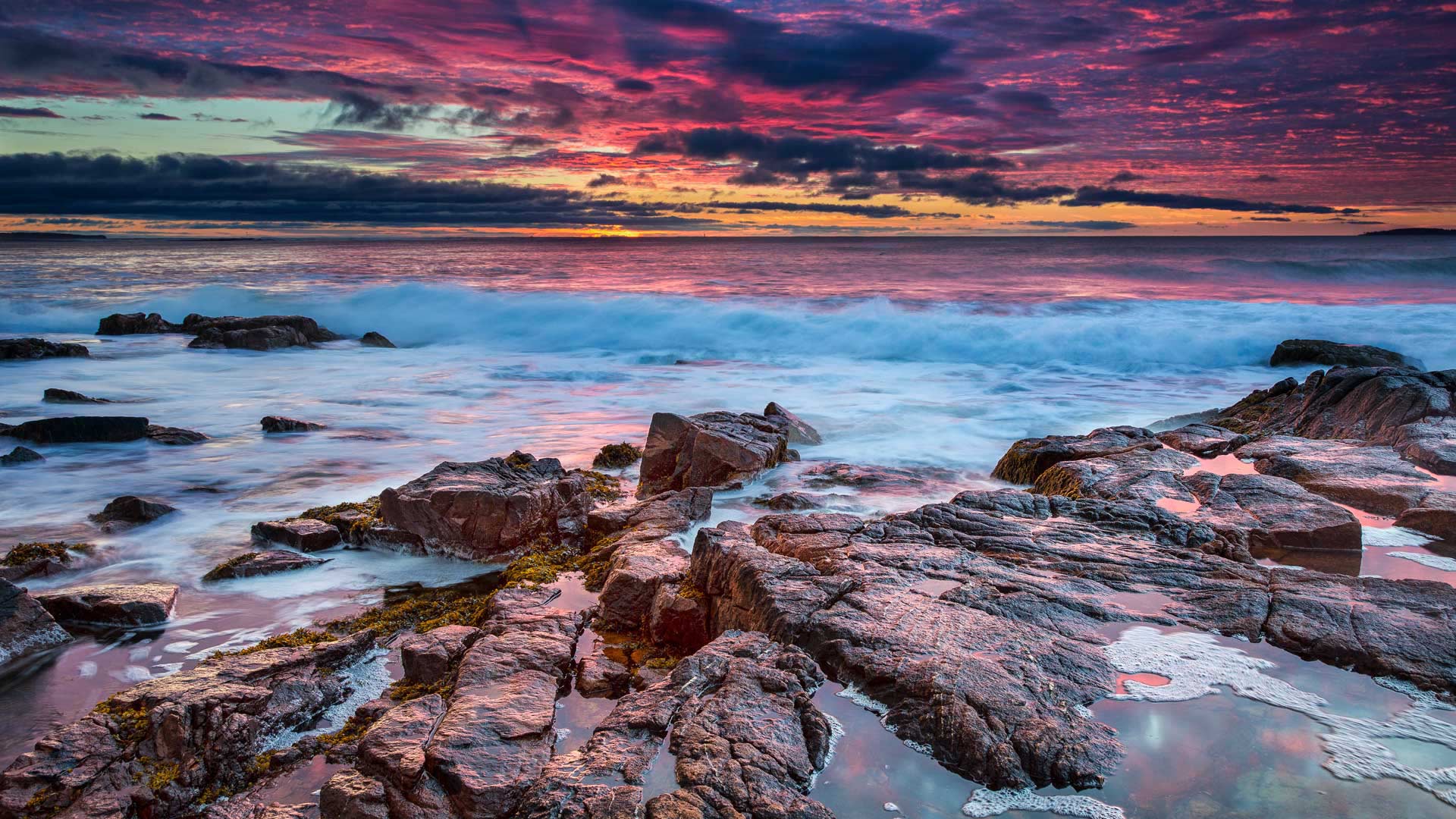
阿卡迪亚国家公园,缅因州 Acadia National Park in Maine (© emptyclouds/Getty Images)
'The Crown Jewel of the North Atlantic'
Welcome to Acadia National Park on Maine's rocky, scenic coast. The 49,075-acre park covers about half of Mount Desert Island, smaller nearby islands, and a section on the mainland. The oldest national park east of the Mississippi River and the only one in Maine, Acadia packs a lot of geographical variety into its relatively small size. You'll find miles of craggy coastline like the shore in our homepage image, woodlands, wetlands, and mountains. The park's Cadillac Mountain is the highest point along the North Atlantic seaboard and a great spot to take in the sunrise.
